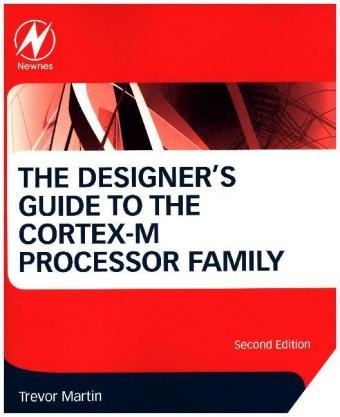Ulteriori informazioni
Informationen zum Autor Trevor Martin graduated from Brunel University in 1988 with an Honors degree in electrical and electronics engineering. In the same year, he began work as a junior hardware engineer at Philips Medical Systems. He joined Hitex in 1992 as a technical specialist for 8-bit microcontroller development tools. This included the 8051,68HC11\05\08 microcontrollers. He also gained experience with networking protocols such as CAN, USB, and TCP/IP. Since 2000, he has been supporting ARM-based microcontrollers, initially ARM7 and ARM9 CPU then moving to Cortex-M processor. To promote these devices, he has worked closely with both NXP and ST and also TI and Freescale to a lesser extent. Since 2005, he has written a number of “Insider’s Guide? books that are introductory tutorials to ARM-based microcontroller families such as LPC2000, STR9, and STM32. He also runs regular training courses, a general Cortex Microcontroller workshop and also device-specific courses. Klappentext The Designer's Guide to the Cortex-M Microcontrollers gives you an easy-to-understand introduction to the concepts required to develop programs in C with a Cortex-M based microcontroller. The book begins with an overview of the Cortex-M family, giving architectural descriptions supported with practical examples, enabling you to easily develop basic C programs to run on the Cortex-M0/M0+/M3 and M4 and M7. It then examines the more advanced features of the Cortex architecture such as memory protection, operating modes, and dual stack operation. . Once a firm grounding in the Cortex-M processor has been established the book introduces the use of a small footprint RTOS and the CMSIS-DSP library. The book also examines techniques for software testing and code reuse specific to Cortex-M microcontrollers. With this book you will learn: the key differences between the Cortex-M0/M0+/M3 and M4 and M7; how to write C programs to run on Cortex-M based processors; how to make the best use of the CoreSight debug system; the Cortex-M operating modes and memory protection; advanced software techniques that can be used on Cortex-M microcontrollers; how to use a Real Time Operating System with Cortex-M devices; how to optimize DSP code for the Cortex-M4; and how to build real time DSP systems. Inhaltsverzeichnis 1. Introduction to the Cortex-M processor family 2. Developing software for the Cortex-M family 3. Cortex-M Architecture 4. Cortex Microcontroller Software Interface Standard 5. Advanced Architectural features 6. Cortex-M7 Architecture 7. Debugging with CoreSight 8. Practical DSP for the Cortex-M4 9. Developing with CMSIS-RTOS 10. Practical RTOS Techniques 11. Test Driven Development 12. Designing Software Components 13. Closing Thoughts ...
Sommario
1. Introduction to the Cortex-M processor family
2. Developing software for the Cortex-M family
3. Cortex-M Architecture
4. Cortex Microcontroller Software Interface Standard
5. Advanced Architectural features
6. Cortex-M7 Architecture
7. Debugging with CoreSight
8. Practical DSP for the Cortex-M4
9. Developing with CMSIS-RTOS
10. Practical RTOS Techniques
11. Test Driven Development
12. Designing Software Components
13. Closing Thoughts

